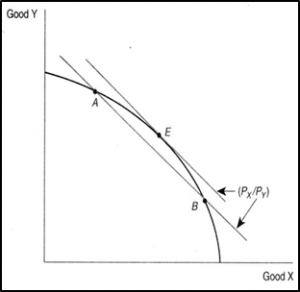Introduction:
This assignment is to write the definition for a relatively complex word in our field of study, in three different formats. The purpose of this exercise is to develop an appreciation and understanding of the various definition forms, and how they can be utilized depending on the situation and audience that is being addressed.
Term:
Autarky [au-tar-ky]
Reading Situation and Audience:
An economist is consulted to explain how countries are reacting to the Covid19 pandemic, in terms of trade restricting policies that almost resemble the autarkic style of North Korea’s economy. This interview with the economist will be published in the ’Happening Now’ column of the local newspaper, targeted towards the general public.
Parenthetical Definition:
Self-sufficient economic state.
Sentence Definition:
Autarky, an economic state in which an entity relies entirely on its own resources to operate – characterized by the absence of trade, and absence of assistance from external agents.
Expanded Definition:
The word autarky stems from Greek roots, autos meaning ‘self’ and arkein meaning ‘to be strong enough, to suffice’ (Index). Other Greek variants include autarkeia meaning ‘sufficiency in oneself, independence’ and autarkes – synonymous to ‘self-sufficient,’ to ‘having enough’ and ‘independent of others’ (Index).
If a country is autarkic, it is a closed economy subject to extreme protectionist measures inhibiting international trade with the motive of improving the domestic economy. An alternative state is an open economy, where trade is encouraged, and the country specializes in the production of goods that it has a comparative advantage. These goods are traded to foreign economies in exchange for the production of a good that the home country does not have a comparative advantage in producing. This enables both the home and foreign countries to consume wider varieties of goods, then they could have produced domestically.
Graphically, an autarkic economy has reached equilibrium when the Price Line of good X and good Y is tangent to the Production Possibility Frontier (PPF – concave line), reflected at point E (Figure 1). At this point, a country is producing at its optimal level to sustain itself in the absence of international trade.

Figure 1: An Autarky Equilibrium
No country is completely autarkic, like Figure 1, unless within a perfect economic model. The nearest real-world example remains North Korea. North Korea operates on the system of juche – meaning ‘self-reliance’ in Korean, parallel to an autarkic economy. Unlike other nations, Korean leaders have limited trading partners to the bare minimum, and instead industrialized the country to meet almost all domestic demand. Historically, North Korea’s economy depicts slowdown and stagnation, with periodic phases of some economic growth, attributed to the restricted nature of the autarkic governing style.
References:
“Autarky (n.).” Index, www.etymonline.com/word/autarky#etymonline_v_26745.
Bajpai, Prableen. “The Constant Crisis of the North Korea Economy.” Investopedia, Investopedia, 29 Jan. 2020, www.investopedia.com/articles/investing/013015/how-north-korea-economy-works.asp.
Bondarenko, Peter. “Autarky.” Encyclopædia Britannica, Encyclopædia Britannica, Inc., 2 Aug. 2018, www.britannica.com/topic/autarky.
Leave a Reply